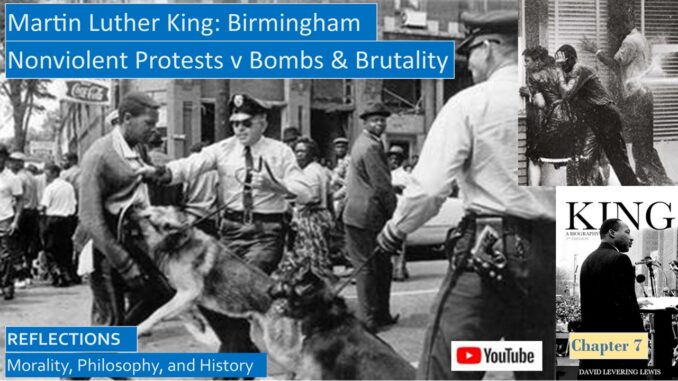
Today we are reflecting on the chapter in David Levering Lewis’ biography of Martin Luther King on his civil rights struggles in brutal Birmingham. We reflect on these questions:
Why did Martin Luther King select Birmingham, Alabama, for his next protests?
Why did Bull Connor attack young student protesters with police dogs and fire hoses, in full view of television cameras and photographers?
Why did Attorney General Robert Kenned have to inquire whether Martin Luther King was alive and well in the Birmingham jail?
Did the KKK dynamite a black church during Sunday School, killing four young black girls?
Script for this video, with more Amazon book links: https://www.slideshare.net/slideshows/martin-luther-king-lunch-counters-freedom-riders-and-albany-lewis-biography-chapters-46/265477594
YouTube video for this blog: https://youtu.be/5y0v0tYMdy8
PRIOR REFLECTIONS
Due to his rousing speeches, Martin Luther King was seen as the spokesman for the Civil Rights movement of the Sixties. He was great television.
Previously we have reflected on his youth and schooling, then the Montgomery Bus Boycott, when Martin Luther King first gained national prominence due to the national media attention. In the months following, Martin Luther King visited Ghana and then India, by invitation, and then participated in the Lunch Counter and Freedom Rider protests, and then pursued Civil Rights in Albany, Georgia. Albany did not attract media attention, and the results were inconclusive, so next was the campaign to promote Civil Rights in brutal Birmingham.
Martin Luther King, Youth and Schooling, Lewis’ Biography Chapters, 1 and 2
https://seekingvirtueandwisdom.com/martin-luther-king-youth-and-schooling-lewis-biography-chapters-1-and-2/
https://youtu.be/_64FMZ6AlEg
Martin Luther King and Rosa Parks, Montgomery Bus Boycott, Lewis’ Biography, Chapter 3
https://seekingvirtueandwisdom.com/martin-luther-king-and-rosa-parks-montgomery-bus-boycott-lewis-biography-chapter-3/
https://youtu.be/TuiyFycWE-U
Martin Luther King, Lunch Counters, Freedom Riders, and Albany, Lewis’ Biography Chapters 4-6
https://seekingvirtueandwisdom.com/martin-luther-king-lunch-counters-freedom-riders-and-albany-lewis-biography-chapters-4-6/
https://youtu.be/_TLt2fQqL4w
MARTIN LUTHER KING AT BIRMINGHAM, ALABAMA
Birmingham, a major center of iron and steel in the South, was one of the toughest cities in Alabama, and Bull Connor was the ideal white supremacist villain. At Albany, there were many protests and many campaigns, but there was no focus, little sense of accomplishment, and no clear villain. Martin Luther King and the SCLC learned their lesson, they worked closer with the local affiliate of the SCLC, the ACMHR, or Alabama Christian Movement for Human Rights, founded by key members of the black community in Birmingham and headed by Reverend Fred Shuttlesworth. They trained hundreds of volunteers in a civil rights boot camp, teaching them the basics of how to conduct a nonviolent campaign. They were warned that they might face violence and possibly death.
The SCLC decided to focus on one campaign, a boycott of the local white businesses just before Easter. As our biographer Lewis writes, the strategy was simple, “mobilize thousands of black citizens” to protest, provoking a “savage white counterreaction that would compel the federal government” now under JFK, a Democratic President, “to implement vigorously the decisions of the Supreme Court.” JFK was much more open to civil rights enforcement; he had been meeting with Martin Luther King on these issues.
Bull Connor had been Commissioner of Public Safety for several decades, off and on. He was notoriously vigilant and cruel. Lewis notes that in Birmingham, “segregation was total and the slightest betrayal of discontent with the racial order was severely, often capitally, punished. Police brutality to blacks was the custom rather than the exception.” “Of the 80,000 registered voters in 1963, only 10,000 were black. When desegregation was mandated, “they closed the city’s parks rather than allow blacks to sully them.” “Whites still sipped water from designated fountains and tried on clothing in fitting rooms” for whites. Blacks were intimidated by the bombing of seventeen black churches in 1963.
BOYCOTT BEGINS IN BIRMINGHAM, ALABAMA
They delayed the start of the protests until after the mayoral elections of Birmingham. Bull Connor was one of the candidates, but he lost in a runoff election in April 1963 to a less violent segregationist candidate. The current administration refused to vacate the office, arguing that an ambiguity in the city charter allowed them to remain in office for another two years, which meant that Bull Connor could remain as Safety Commissioner. While this was under review by the Alabama Supreme Court, Bull Conner was still in charge.
The Birmingham Manifesto was issued, declaring: “The patience of an oppressed people cannot endure forever.” “We have been segregated racially, exploited economically, and dominated politically. Under the leadership of the ACMHR, we sought relief by petition for the repeal of city ordinances requiring segregation and the institution of a merit hiring policy in city employment.”
Martin spoke at a packed prayer meeting. “We are heading for freedom land, and nothing is going to stop us. We are going to make Birmingham the center of antidiscrimination activity in the nation. I have come here to stay until something is done.”
So many white Christians today somehow feel that the Black Lives Matter movement is anti-Christian and anti-American, that it is important to emphasize that many of the leaders of the Civil Rights movement were black ministers who genuinely sought to protest the injustice suffered by blacks in the spirit of Christ. Indeed, the Ten Commandments drafted for the protesters are helpful for anyone undergoing a difficult time in their lives.
The volunteers had to agree to and sign this Ten Commandments Pledge:
- “MEDITATE daily on the teachings and life of Jesus.
- REMEMBER always that the nonviolent movement in Birmingham seeks justice and reconciliation, not victory.
- WALK AND TALK in the manner of love, for God is Love.
- PRAY daily to be used by God in order that all men might be free.
- SACRIFICE personal wishes in order that all men might be free.
- OBSERVE, with both friend and foe, the ordinary rules of courtesy.
- SEEK to perform regular service for others and for the world.
- REFRAIN from the violence of fist, tongue, or heart.
- STRIVE to be in good spiritual and bodily health.
- FOLLOW the directions of the movement and of the captain of the demonstration.”
The purpose of the last point is to avoid having the protests spin off into violence.
Seeing the television cameras roll, Commissioner Connor’s men behaved civilly for three days of the demonstrations, politely leading those they were arresting into the police vans, only showing their dogs briefly on one day. His constraint anticipated that the local court would issue an injunction forbidding future protests.
MARTIN LUTHER KING IN BIRMINGHAM JAIL
When this injunction was issued the question arose: Would Martin Luther King himself protest and be arrested, and would he seek bail? The dilemma was that they needed to bail out the daily wage earners but felt that only Martin had the charisma to raise the funds needed for bail. But in the end, Martin Luther King and Ralph Abernathy decided to go to prison as a form of protest, along with fifty other volunteers. Martin was placed in solitary confinement, without access to a phone, without access to his attorney.
With all contact cut off, this was the most pressing question: Was Martin Luther King alive? Or had he been lynched? On Easter Sunday, Coretta Scott King placed a call to the White House asking if they could inquire. The Attorney General, Robert Kennedy, called her and told her, though he was not able to arrange for her husband to call her, that he was indeed safe. On Monday morning, JFK called her to say she would be expecting a call from her husband and that FBI agents were on the scene in Birmingham.
This controversy prompted eight white Birmingham pastors, scandalized by the movement’s breaking the unjust laws preventing demonstrations and the militance of the black leaders and clergy, to issue an Appeal for Law and Order and Common Sense, which discouraged civil discord while the issue was being addressed by the local and federal courts. In response, Martin Luther King wrote his famous Letter from Birmingham Jail, which forcefully contended that blacks had been patient enough for decades, that the time is NOW for positive racial change.
As our author Lewis recounts, “Every Negro was familiar with the cry of ‘WAIT!’ It nearly always meant ‘NEVER.’” While “Asian and African countries were gaining independence,” in America “we creep at horse-and-buggy pace towards gaining a cup of coffee at a lunch counter.” The letter then lists the many things denied to blacks.
There were direct and indirect links between the Jim Crow system of segregation in the Deep South and the rising anti-Semitic Naziism that infected Europe and the world in the years before and during World War II. In his Letter from a Birmingham Jail, Martin Luther King directly references the Jim Crow legal system and the lynching plaguing the Deep South as an American Holocaust. We were easily able to compare this letter to Hannah Arendt’s essay on the Banality of Evil, which discusses the role of the bureaucrat Adolph Eichmann in the Jewish Holocaust in Nazi Germany.
Comparing MLK’s Letter from Birmingham Jail with Hannah Arendt’s Banality of Evil in Nazi Germany
http://www.seekingvirtueandwisdom.com/comparing-martin-luther-kings-letter-from-the-birmingham-jail-with-hannah-arendts-the-banality-of-evil/
https://youtu.be/PqFAUEXbi8k
Scholars have revealed there were direct links between the Jim Crow system of segregation in the Deep South and Adolph Hitler’s Nazi regime. When formulating the Nuremberg ant-Semitic Race Laws soon after Hitler came to power, Nazi lawyers used the Jim Crow segregation laws as precedent. Just as blacks would be denied due process and the right to vote, so Jews in Nazi Germany were denied full citizenship and a voice in government and were soon banned from schools and civil employment. The Nazis felt they were unable to duplicate the Jim Crow system where one drop of colored blood makes you subject to the Jim Crow laws, as having only one Jewish grandparent did not mean that you were Jewish, you had to have more family connections, and the Nazis were not initially able to implement the total segregation of Jews in their society.
How the Racist Jim Crow Laws Served as Precedent for the Nazi Nuremberg Race Laws
http://www.seekingvirtueandwisdom.com/how-the-racist-jim-crow-laws-served-as-precedent-for-the-nazi-nuremberg-race-laws/
https://youtu.be/_td3jPGD5TI
Also, you can compare the firebombing of dozens of black homes and churches during the Civil Rights era to the Nazi Night of Broken Glass, the Kristallnacht, when Nazi SS stormtroopers destroyed Jewish synagogues, businesses, and homes.
How the Catholic Church and the Confessing Church Survived Under Hitler’s Pagan Nazi Regime
http://www.seekingvirtueandwisdom.com/christians-under-hitlers-german-nazi-regime/
https://youtu.be/QP9UR8fqfvs
Sensing an impasse, Martin Luther King and Ralph Abernathy accepted release on bail in late April. When tried a week later, they were fined fifty dollars and five days loss of liberty.
SCHOOL CHILDREN MARCH IN PROTEST
This was good television, but they needed better television. They launched the most controversial tactic of all. Six thousand children, aged six to sixteen, marched and protested from the Sixteenth Street Baptist Church to downtown. A thousand children were arrested. Up to now, Bull Conner showed restraint for television, but for some reason, he decided to brutalize these children.
As Lewis recounts: “Police dogs were released to charge snarling into the marchers. At least three young people were seriously bitten. Officers waded into the midst, flailing nightsticks indiscriminately. Firemen release gallons of blistering water from their pressure hoses.”
This violence was repeated over the next three days. Angry young black men joined the demonstrators, throwing bottles and bricks at the police, some marched with knives and pistols. More than two thousand demonstrators were arrested, and several more thousand volunteers were waiting their turn to march.
There were negotiations between Martin and federal officials. Lewis recounts, “Black demands had crystallized into four conditions:
- Desegregation of lunch counters, restrooms, fitting rooms, and drinking fountains in department stores.
- Promotion and hiring of blacks on a nondiscriminatory basis throughout the city’s business and industrial community.
- Dropping all charges against demonstrators.
- Formation of a biracial committee to prepare a timetable for desegregation in other areas of Birmingham.”
Lewis recounts the rising violence. Two fire hoses “were dislodged by their water pressure and rocketed into a group of policemen; one officer’s ribs and another’s legs were crushed. Connor’s men were no longer attempting to control the crowds. They had been ordered to drive them brutally into the black section of the city. It was not surprising that nonviolent discipline collapsed under naked provocation. A hail of rocks, bottles, and brickbats showered the police and firemen.”
In the melee, Reverence Fred Shuttlesworth was injured when a fire hose threw him against a building. When told that an ambulance carried him off, Bull Conner remarked, “I am sorry I missed it. I wish they had carried him away in a hearse.”
Although the SCLC leadership realized they had lost control of the crowds, Martin Luther King did not call for a halt in the protests as he had in Albany. Tempers ran so high that this was likely not possible. Lewis recounts: “Frightened by Connor’s stormtrooper methods and fearful of a recurrence of violence, white businessmen requested a truce. That evening, Connor asked Governor George Wallace for and received more than five hundred state troopers.” “The Connor forces had every intention of engineering a slaughter. After a three-hour conference with the whites, the SCLC leaders agreed to a truce that evening. But Martin announced that demonstrations would resume on Thursday at 11 AM if their demands had not been met.”
Then Bull Connor arrested Martin Luther King and Ralph Abernathy. When they threatened the resumption of demonstrations, federal officials intervened to give the Attorney General time to negotiate their release, and they were later bailed out of jail. Lewis recounts, “On Thursday morning, the white negotiators agreed to the essential demands of the black community. Lunch counters, restrooms, fitting rooms, and drinking fountains in the large downtown stores were to be desegregated. The SCLC accepted a ninety-day transition period. Similarly, the hiring and promotion of black personnel was to take place over the next sixty days. The biracial committee was to be formed within two weeks. The nearly three thousand persons arrested were to be released immediately. The whites refused, however, to recommend the dismissal of the charges against them, necessitating the payment of bail.”
Lewis continues: Later that month, “the US Supreme Court’s decision legalizing sit-in demonstrations in cities enforcing segregation nullified the Alabama laws under which the large majority of Birmingham’s demonstrators could be prosecuted.”
What was the toll? Several dozen people were injured and hospitalized. Many demonstrators had been fired from their jobs.
VIOLENCE IN BIRMINGHAM CONTINUES
But the violence did not cease. Martin’s brother’s house was demolished by a bomb, though miraculously he, his wife, and his children were not harmed. A motel used by SCLC leaders was partially destroyed by a bomb. The rioting continued. Bull Connor called on whites to boycott the stores until the compact was abrogated. Children who participated in the demonstrations were expelled from school, though the NAACP lawyers were able to persuade the federal courts to reverse this. At the month’s end, the Alabama Supreme Court ruled that the current city government should relinquish office, meaning Bull Connor was no longer in charge.
But four months later, in September 1963, the KKK detonated dynamite under the stairs of the 16th Street Baptist Church in Birmingham during Sunday School, killing four young black girls, including Addie Mae, Cynthia, Carole, and Denise, ages eleven to fourteen, and injuring several dozen others. A white jury eventually convicted several of the perpetrators for murder, unlike other trials where white juries refused to rule against white defendants no matter how heinous their crimes against blacks.
Addressing the nation on television, President Kennedy proclaimed, “This nation is committed to a course of domestic justice and tranquility.” “If these cruel and tragic events can awaken that city and state, if they can awaken this entire nation,” “then it is not too late for all concerned to unite in steps toward peaceful progress before more lives are lost.” But no whites attended the funeral services of these four young black girls.
“Am I imaging it,” a Birmingham businessman inquired, “or are the Negroes I see around town walking a little straighter these days?” Martin Luther King wrote, “For hundreds of years, the quiet sobbing of an oppressed people had been unheard by millions of white Americans.” “The lament became a shout and then a roar and for months no American, white or Negro, was insulated or unaware.”
John F Kennedy said this to the American people in his television address: “One hundred years of delay have passed since President Lincoln freed the slaves, yet their heirs, their grandsons, are not fully free. They are not yet freed from the bonds of injustice. They are not yet freed from social and economic oppression. And this nation, for all its hopes and all its boasts, will not be fully free until all its citizens are free.”
JFK continues, “We preach freedom around the world, and we mean it, and we cherish our freedom here at home, but are we to say to the world” “that this is a land of the free except for the Negroes?” “Now the time has come for this nation to fulfill its promise. The events in Birmingham and elsewhere have so increased the cries for equality that no city or state or legislative body can prudently choose to ignore them.”
Our author began this chapter with this quote by JFK: “Our judgment of Bull Connor should not be too harsh. After all, in his way, he has done a good deal for civil rights legislation this year.”[1]
Now only Americans in their Seventies remember seeing these images on their television sets. For the rest of us, this is history we must study and remember.
After the Birmingham struggle, there was the March on Washington where Martin Luther King delivered his famous “I Have a Dream” speech at the Reflecting Pool in Washington, DC. After that, there was the bloody march on Selma, his fight for more equitable housing in Chicago, and finally, when his life was cut short by his assassination in Memphis.
yt
DISCUSSING THE SOURCES
The author, David Levering Lewis, was planning to write the biography of Martin Luther King when he was assassinated. It became the classic biography of this Civil Rights icon. We reflected on his classic biography, and several controversies that have arisen since his assassination, in greater depth in our reflection on his youth and school years. Lewis also wrote the definitive biography for WEB Du Bois.
Martin Luther King, Youth and Schooling, Lewis’ Biography Chapters, 1 and 2
https://seekingvirtueandwisdom.com/martin-luther-king-youth-and-schooling-lewis-biography-chapters-1-and-2/
https://youtu.be/_64FMZ6AlEg
[1] David Levering Lewis, KING, a Biography (Chicago, Illinois, University of Illinois Press, 2013, 1970), Chapter 7, pp. 171-209 and https://www.npr.org/2010/01/18/122701268/i-have-a-dream-speech-in-its-entirety .

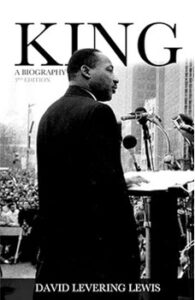
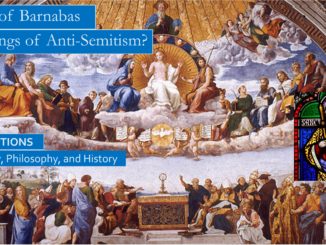
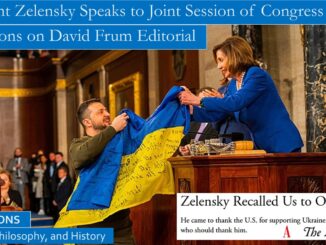
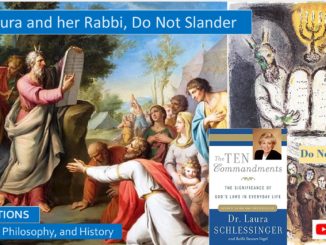
2 Trackbacks / Pingbacks